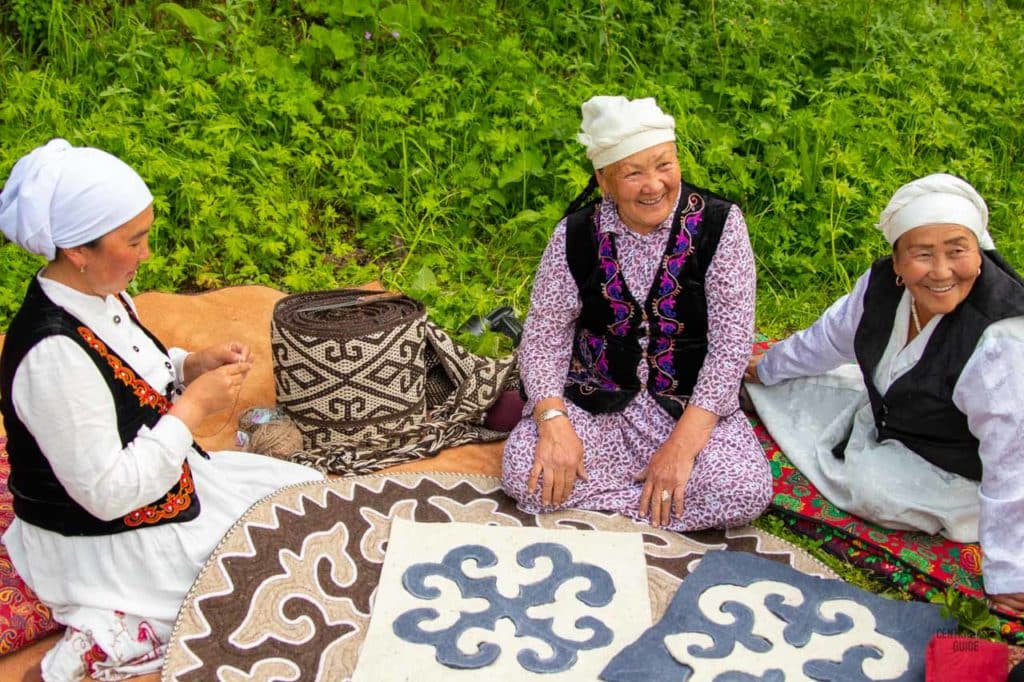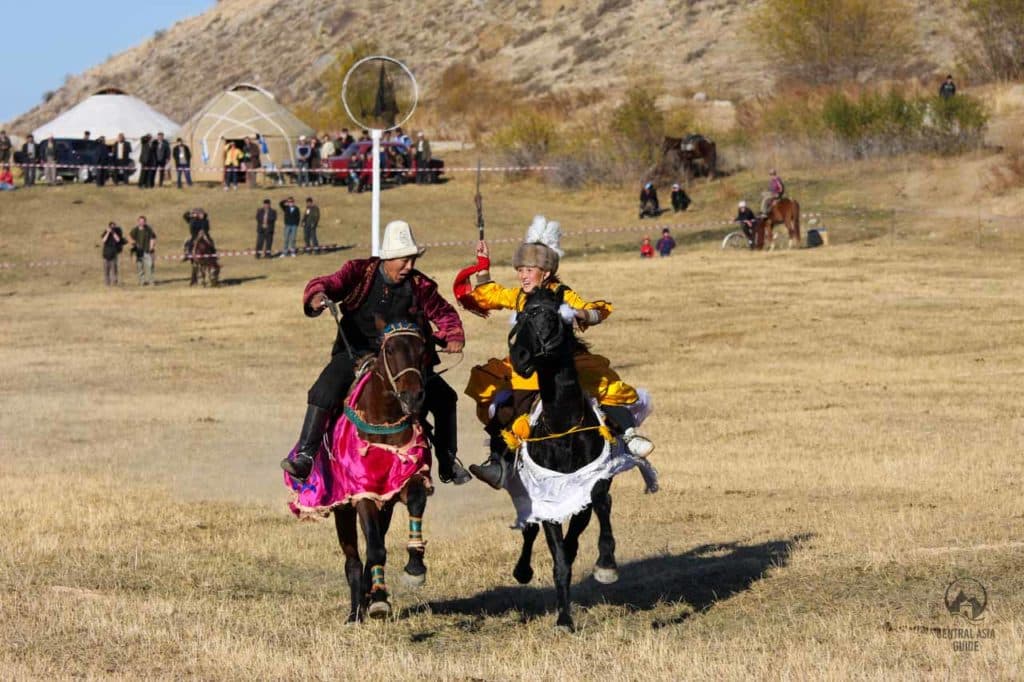Kyrgyz Culture and Traditions
Kyrgyz Culture
As a significant part of the Silk Road, Kyrgyz culture has been influenced by China, Iran, Middle East, the Western world and later Russia and the Soviet Union and is thus a mix of several culture and a home to many different ethnic groups. Kyrgyz culture is closely connected with nomadism in everyday life with holidays, crafts, music and cuisine. The nomadic life and livestock culture are based primarily on the animals and what tending and harvesting from them require during different seasons of the year. The harsh landscape and sparsely populated areas have grown a culture where guests were traditionally granted with the best of everything a host could provide and this generosity carries over to the modern-day travelers as well especially in the rural areas.


The folk traditions and customs are closely linked to the nomadic way of life characteristic of the Turkic and Mongolian people. For centuries Kyrgyz people have made many beautiful and fascinating things from sheep’s wool and animal skin. The yurt has been a vital part of the nomadic life as well. It serves as the family home and comprises everything from birth to death. People decorated their homes with items that were both beautiful and practical.
The horse has been another essential supporter and a loyal companion to the Kyrgyz people and therefore a part of Kyrgyz culture. In the epoch of Kyrgyz people, the national hero Manas has his reliable horse, riding with its owner through the country’s valleys, mountains, and rivers. The Manas Epic is possibly defining the most important parts of Kyrgyz culture. Manas epic is a long, complex cycle of legends associated with the achievements of a heroic batyr (khan or tribal leader) who was believed to contain all the powerful qualities associated with the Kyrgyz character. Kyrgyz culture can be experienced the best during our Kyrgyzstan Tours or Central Asia Tours and the summer time festivals and events.
Kyrgyz Cuisine
The national cuisine of Kyrgyzstan is very diverse due to the variety of people that live in the country. For instance, Naryn area is famous with cuisine consisting mostly of meat and bread, with fewer spices.
Southern Kyrgyzstan (Osh and Batken regions) has a strong influence from the Uzbek kitchen and Issyk-Kul area from Dungans, Uighurs and Chinese, where the cuisine tends to feature more spices and other less used ingredients like rice and noodles. In overall Kyrgyz food is very delicious, fatty and has its own strange local delicacies that are mostly suited for the local tongue.
Landscape and Nomadism in Kyrgyz Culture
Traditional Kyrgyz culture is all about animal herding in the mountain pastures and meat and it can still very well be seen in the celebration culture where meat and full tables have an important and respected part. Handicrafts are mostly made from wool along with the yurts and children still play the traditional games with sheep bones as the pieces (called “Chuko”) in the rural areas. Animals are still sold in the animal bazars and national holidays follow the significant times of the year, like for example Nooruz which is marking the beginning of the new season for growing things.
Kyrgyz customs and traditions
The Kyrgyz people, like any other nation, have many customs and traditions that accompany a person from birth to death. They reflect national characteristics, nature, history, beliefs, mentality and living conditions.
Known Kyrgyz people
There are not that many internationally known Kyrgyz people. Probably the most internationally known Kyrgyz person is Chyngyz Aitmatov, the author of several books that have been translated to numerous different languages.
What to buy from Kyrgyzstan
While traveling in the new country you possibly think about what you can bring from there as a gift to relatives and friends as for yourself as a memory. Locally made souvenirs from felt, local beer as many interesting items you can buy in Kyrgyzstan.
Kyrgyzstan Culture Tours
See also Uzbek, Kazakh, Tajik & Turkmen cultures
Page updated 15.11.2022